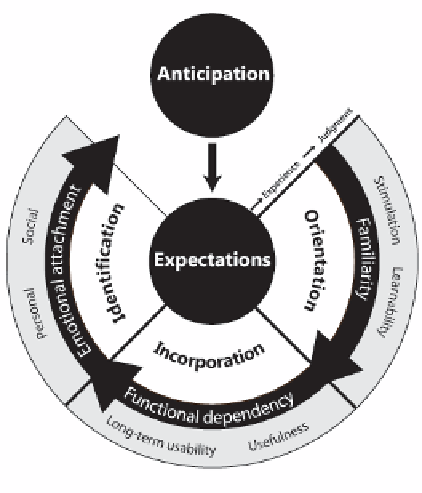Information Technology Reference
In-Depth Information
Fig. 4.5 Temporality of experience
, consisting of three main forces, an increasing famil-
iarity, functional dependency and emotional attachment, all responsible for shifting users'
experience across three phases: orientation, incorporation and identification. In each phase,
different product qualities are appreciated
impacting our overall evaluative judgments. Finally, as we accept the product in
our lives, it participates in our social interactions, communicating parts of our self-
identity that serve to either differentiate us from others or connect us to others by
creating a sense of community. This phase we call
Identification
.
Next, we illustrate how this framework was developed from the actual study by
addressing our three overall questions:
4.4.3.1
Can Users' Experiences be Articulated in Distinct Phases in the
Adoption of the Product?
4.4.3.1.1 Anticipation
Participants formed an average of six pre-purchase expectations. Expectations re-
lated to
opportunities for positive experiences
(76%) such as the performance of
the multi-touch screen, the incorporation of a mobile agenda and mobile internet
in daily life, the aesthetics of packaging and product, as well as friends' and col-
leagues' reactions,
“...I bought my iPod not only as a music player but also as an organizer. But
synchronizing iPod with my iCal was not that easy and I could not even add

Search WWH ::

Custom Search